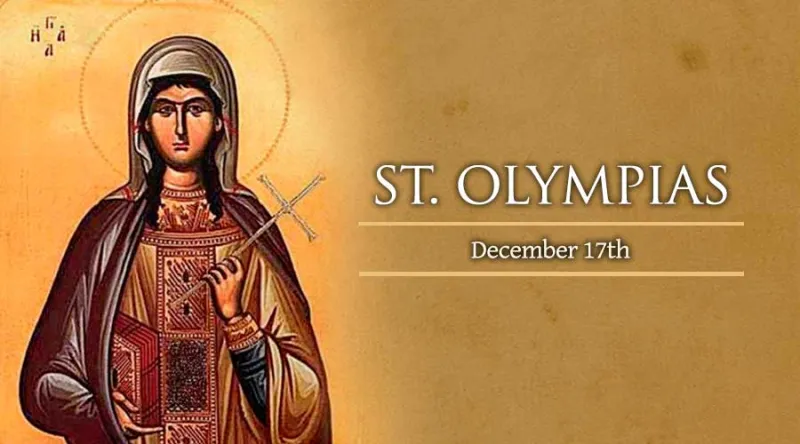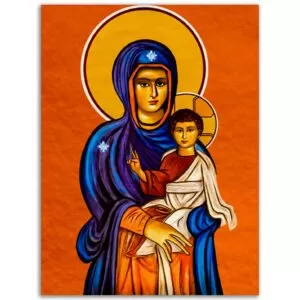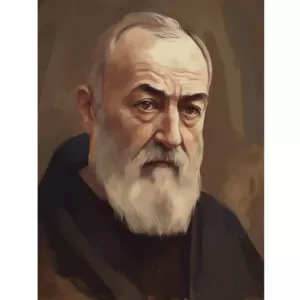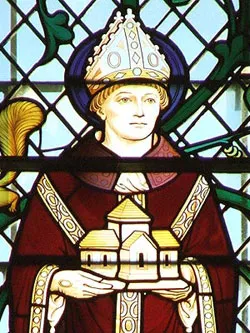St. Olympias

 St. Olympias
St. Olympias Feast date: Dec 17
Born sometime between 360-365, this pious, charitable, and wealthy disciple of St. John Chrysostom came from an illustrious family in Constantinople. Her father (called by the sources Secundus or Selencus) was a “Count” of the empire. One of her ancestors, Ablabius, filled the consulor office in 331, and was also praetorian prefect of the East.
As Olympias was not thirty years of age in 390, she cannot have been born before 361. Her parents died when she was quite young, and left her an immense fortune. In either 384 or 385 she married Nebridius, Prefect of Constantinople. St. Gregory of Nazianzus, who had left Constantinople in 381, was invited to the wedding, but wrote a letter excusing his absence (Ep. cxciii, in P.G., XXXVI, 315), and sent the bride a poem (P.G., loc. cit., 1542 sqq.). Within a short time Nebridius died, and Olympias was left a childless widow. She steadfastly rejected all new proposals of marriage, determining to devote herself to the service of God and to works of charity. Nectarius, Bishop of Constantinople (381-97), consecrated her deaconess.
On the death of her husband, the emperor had appointed the urban prefect administrator of her property, but in 391 (after the war against Maximus) he restored to her the administration of her large fortune. She built beside the principal church of Constantinople a convent, into which three relatives and a large number of maidens withdrew with her to consecrate themselves to the service of God. When St. John Chrysostom became Bishop of Constantinople in 398, he acted as spiritual guide of Olympias and her companions, and, as many undeserving approached the kind-hearted deaconess for support, he advised her as to the proper manner of utilizing her vast fortune in the service of the poor (Sozomen, “Hist. eccl.”, VIII, ix; P.G., LXVII, 1540). Olympias resigned herself wholly to Chrysostom’s direction, and placed at his disposal ample sums for religious and charitable objects. Even the most distant regions of the empire received her benefactions to churches and the poor.
When Chrysostom was exiled, Olympias supported him in every possible way, and remained a faithful disciple, refusing to enter into communion with his unlawfully appointed successor. Chrysostom encouraged and guided her through his letters, of which seventeen are extant (P.G., LII, 549 sqq.). These are a beautiful memorial of the noble-hearted, spiritual daughter of the great bishop.
Olympias was also exiled, and died a few months after Chrysostom on July 25, 408, probably at Nicomedia. After her death she was venerated as a saint. A biography dating from the second half of the fifth century, which gives particulars concerning her from the “Historia Lausiaca” of Palladius and from the “Dialogus de vita Joh. Chrysostomi”, proves the great veneration she enjoyed. During he riot of Constantinople in 532, the convent of St. Olympias and the adjacent church were destroyed.
Emperor Justinian had it rebuilt, and the prioress, Sergia, transferred there the remains of the foundress from the ruined church of St. Thomas in Brokhthes, where she had been buried. We possess an account of this translation by Sergia herself. The feast of St. Olympias is celebrated in the Greek Church on July 24, and in the Roman Church on December 17.
Source: The Catholic Encyclopedia
Saint of the Day – rosary.team
















